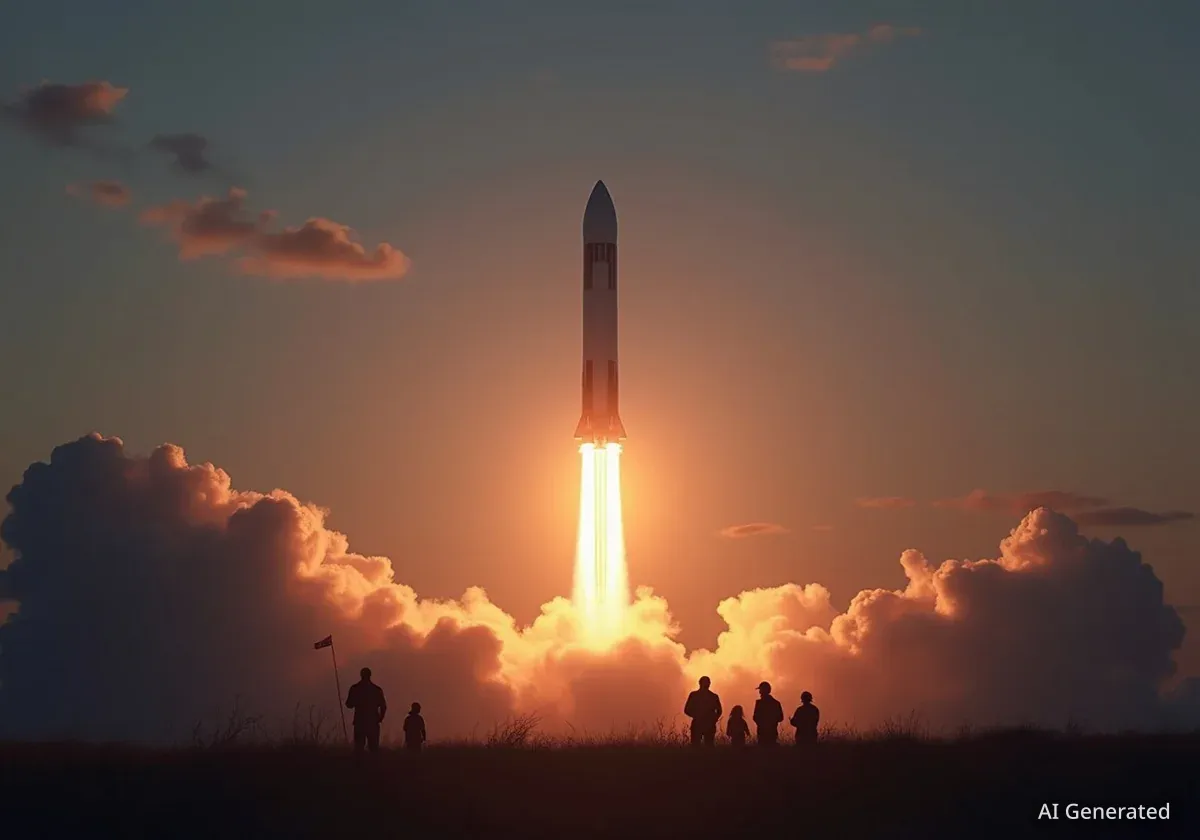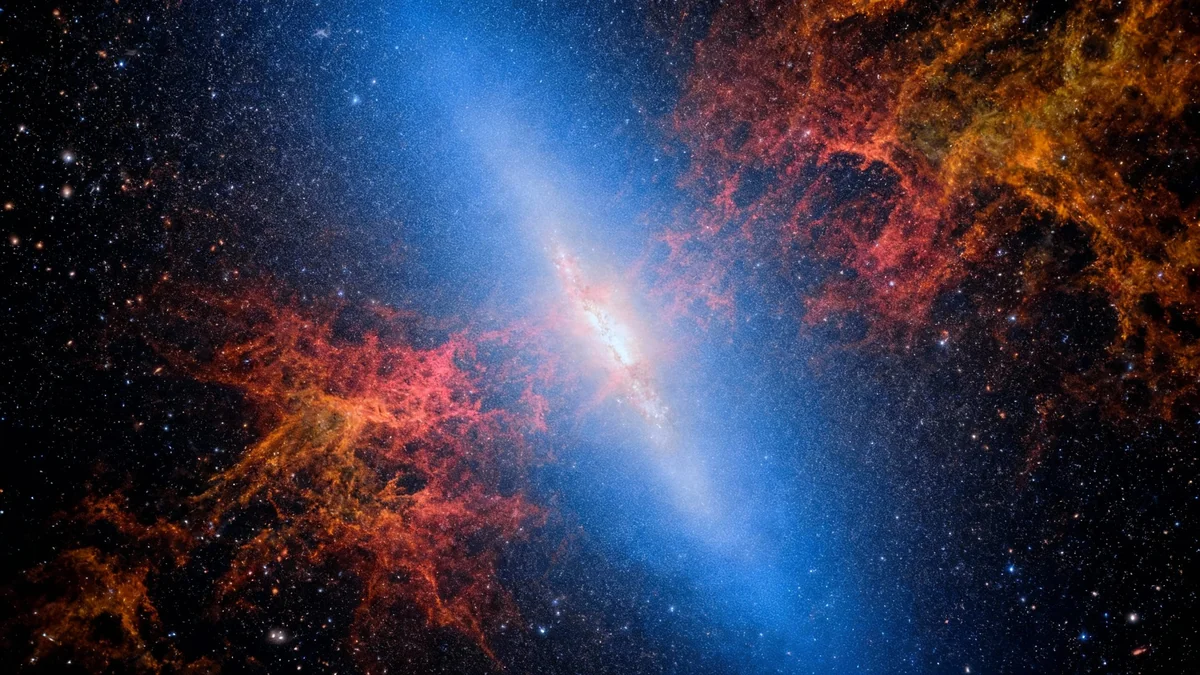A new era of space research is unfolding as scientists begin flying on commercial suborbital flights to conduct experiments firsthand. In late 2023, Southwest Research Institute scientist S. Alan Stern completed a mission aboard a Virgin Galactic spaceplane, not as a tourist, but to prepare for a future NASA-funded astronomy project.
This flight marks a significant shift, moving away from solely automated missions to a model where researchers can directly interact with their experiments in space, much like geologists or oceanographers work in the field.
Key Takeaways
- Scientists are using commercial suborbital flights, like those from Virgin Galactic, for hands-on research in space.
- A recent training mission successfully prepared a scientist for a future NASA-funded astronomy experiment.
- This new approach is more cost-effective than traditional uncrewed sounding rockets and allows for direct researcher involvement.
- The training flight involved simulating tasks in microgravity to reduce risks for the primary scientific mission.
A New Frontier for Field Research
For decades, suborbital research relied on automated sounding rockets to carry experiments into space. While effective, these missions were expensive and lacked the flexibility of human intervention. Now, commercial spaceflight companies are changing the landscape.
Vehicles developed for space tourism are proving to be powerful platforms for science. They allow researchers to fly alongside their payloads, make real-time adjustments, and gather data directly. This hands-on approach was previously impossible for most scientists conducting suborbital studies.
S. Alan Stern's flight on the Galactic 5 mission from Spaceport America in New Mexico served as a critical test. It was designed as a training and risk-reduction flight to ensure the success of a more complex, NASA-backed mission planned for the future.
Preparing for a High-Stakes Mission
The ultimate goal is to determine if Virgin Galactic's SpaceShipTwo is a viable platform for astronomical observations. Stern plans to use a specialized astronomical imaging system, which previously flew on two space shuttle missions, to capture images of star fields through the spacecraft's windows.
By comparing the new data with the old, researchers can assess if factors like exhaust films or window micro-abrasions compromise the quality of observations. However, operating sensitive equipment during a brief, four-minute period of weightlessness presents unique challenges for a first-time astronaut.
From Sounding Rockets to Crewed Flights
Since the 1940s, uncrewed sounding rockets have been the workhorses of suborbital science, launching hundreds of experiments. They helped test sensors, sample the upper atmosphere, and study the universe. The new generation of reusable, crewed vehicles offers similar capabilities at a lower cost and with the added benefit of having the scientist present.
To prepare, Stern’s training flight had nine specific objectives. These included practicing movement in zero gravity with a mock-up of the camera, managing the tight timeline, and simply experiencing the sensory inputs of spaceflight to minimize distractions during the actual experiment.
"We decided to use a SwRI-funded Virgin Galactic flight specifically to familiarize me with spaceflight and to mitigate some of the obstacles to success that could have appeared on the NASA flight," Stern explained, highlighting the proactive approach to ensuring mission success.
All nine objectives were successfully completed, paving the way for the primary research flight.
The Suborbital Flight Experience
A Virgin Galactic flight is a multi-stage event. The VSS Unity spacecraft is carried to an altitude of nearly 50,000 feet by a larger mothership, VMS Eve, before being released.
After a two-second free-fall, the spacecraft's rocket engine ignites, pushing passengers back into their seats with forces reaching nearly 5 Gs. The vehicle accelerates to over Mach 3 in about 60 seconds, pitching vertically to climb toward space.
Flight by the Numbers
- Launch Altitude: ~50,000 feet (15,200 meters)
- Top Speed: Over Mach 3
- Peak Altitude: Over 50 miles (80 kilometers)
- Weightless Time: Approximately 4 minutes
- Peak G-Force: Nearly 5 Gs during ascent and reentry
Once the engine cuts off, passengers experience about four minutes of weightlessness as the craft coasts to its peak altitude of 55 miles (86 kilometers). It is during this brief window that scientific tasks must be performed. The reentry phase is equally intense, with the vehicle using a unique "feathering" system with its tail booms to stabilize its descent before gliding to a runway landing.
Lessons Learned in Zero Gravity
During his time in microgravity, Stern practiced moving between windows with the camera mock-up, recorded physiological data, and even took a moment to appreciate the view of Earth.
He noted several surprising aspects of the experience. The cabin was extremely quiet, punctuated only by the sharp, loud firings of the attitude control jets. Moving around also required conscious effort to compensate for the spacecraft's own rotations.
"Each time the vehicle pivoted in space... the place I was headed to would pivot around me," he recalled, explaining how he had to make secondary movements to reach his target. The lessons learned from this flight are being used to refine procedures for the upcoming NASA mission.
The Future of In-Person Space Science
With the successful completion of the preparatory flight, the focus now shifts to the main astronomical research mission. This flight is tentatively scheduled for 2026 or later, pending the readiness of Virgin Galactic's new Delta-class spacecraft.
The astronomical camera and biomedical harnesses are prepared for the next flight. This mission represents a milestone in a new model of space science, where researchers are no longer just passive observers on the ground but active participants in the field.
This shift could democratize access to space for a wider range of scientific disciplines, enabling more frequent and less expensive experiments. As Stern noted, he can envision a future where numerous researchers fly to space regularly to collect their data, opening up new possibilities for discovery.





